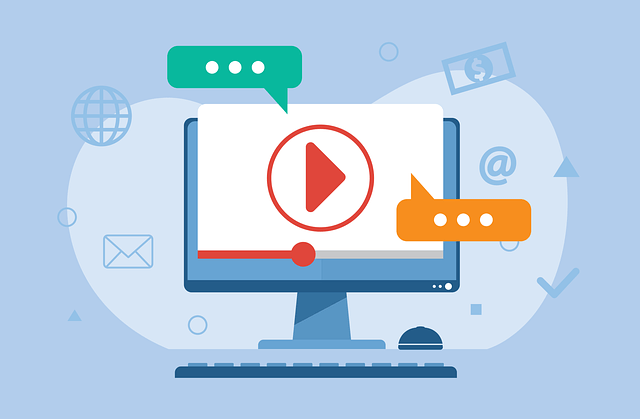Explore the top 15 online advertising methods in 2025. Learn the most effective digital marketing strategies to grow your brand, drive traffic, and boost conversions.

Introduction: The Evolution of Online Advertising and Its Importance in 2025
How Online Advertising Has Changed Over the Years
Over the last decade, online advertising has completely transformed. Businesses no longer rely only on TV, radio, or newspapers to reach their audience. Instead, they use websites, social media, and search engines to promote their products or services. This shift is due to the growing number of people using the internet every day. In 2025, digital marketing is more powerful than ever and continues to evolve with new tools, platforms, and strategies.
Why Online Advertising Matters More Than Ever in 2025
As more people shop, search, and connect online, businesses must adapt by using digital methods to stay visible. Online advertising allows companies to reach specific audiences, measure performance in real time, and adjust their strategies quickly. It is also more cost-effective than traditional methods. In 2025, if your business is not advertising online, you risk falling behind competitors who are using digital marketing to grow faster and reach more customers.
Top 15 Online Advertising Methods in 2025 Explained One by One
1. Social Media Advertising
Social media advertising continues to dominate in 2025 because it places your message exactly where people are spending their time—on platforms like Facebook, Instagram, TikTok, LinkedIn, and X (formerly Twitter). These platforms let you create image, video, or carousel ads and offer advanced audience targeting based on interests, age, location, and even behavior. You can promote your products directly, build your brand, or send traffic to your website. The best part? You can track everything—from clicks and views to sales—so you know what’s working and what’s not.
2. Search Engine Advertising (PPC)
Pay-per-click advertising is still one of the fastest ways to show up on top of search engine results, especially when using Google Ads. Whenever someone types in a keyword related to your product or service, your ad can appear above organic results. You only pay when someone clicks, which makes it budget-friendly. PPC is ideal for capturing high-intent customers—those who are already searching for something you offer. A well-crafted PPC campaign can bring in traffic, leads, and sales almost immediately.
3. Search Engine Optimization (SEO)
SEO helps your business show up organically in search engines like Google and Bing. While it takes longer to see results compared to paid ads, SEO is essential for long-term growth. It involves optimizing your website with keywords that people are searching for, improving page loading speed, writing helpful blog content, and earning backlinks from other trusted websites. A strong SEO strategy builds credibility, increases traffic without paying for ads, and helps your business appear more trustworthy to users.
4. Video Advertising
Video content is one of the most engaging forms of advertising today. In 2025, platforms like YouTube, TikTok, Instagram Reels, and even Facebook Watch make it easy to deliver your message through short, entertaining videos. Whether it’s a product demo, customer testimonial, or behind-the-scenes look at your business, videos can explain complex ideas quickly and clearly. Video ads help people connect emotionally with your brand and often lead to higher engagement and better conversion rates.
5. Influencer Marketing
Influencer marketing involves partnering with individuals who have built a loyal following online. These influencers, whether macro or micro, can promote your product to their audience in a way that feels authentic and relatable. Their followers trust their recommendations, making influencer ads more powerful than traditional ones. In 2025, influencer partnerships are more structured, with better tools to track performance, ensure transparency, and measure return on investment.
6. Email Marketing
Email marketing may be one of the oldest digital strategies, but it remains one of the most effective. It gives you a direct line of communication to your audience. You can use it to send promotions, updates, welcome messages, or even educational content. In 2025, email automation tools allow businesses to send messages based on customer behavior—like sending a discount when someone abandons their cart. Segmenting your list and personalizing your emails can greatly improve engagement and conversions.
7. Native Advertising
Native ads blend in with the content on a website or app, making them feel less like ads and more like helpful information. Think of sponsored articles, recommended content, or in-feed social media ads. Because they don’t interrupt the user experience, people are more likely to engage with them. In 2025, native advertising is widely used to share educational or entertaining content that subtly promotes your product or service.
8. Display Advertising (Banner Ads)
Display ads are visual ads—images, animations, or videos—that appear on websites across the internet. You’ve probably seen them at the top or side of a webpage. These ads are great for brand awareness, especially when you’re trying to stay top of mind. Many businesses use them for retargeting, which means showing ads to people who already visited your website but didn’t make a purchase. When used correctly, display ads can help increase conversions and bring back lost traffic.
9. Retargeting (Remarketing) Ads
Retargeting ads are specifically aimed at users who have already interacted with your business in some way—like visiting your website, clicking on a product, or watching a video. These ads follow them across the internet, reminding them to return and complete an action, such as buying or signing up. This strategy works because it targets warm leads—people who already showed interest but didn’t take the final step. In 2025, smart retargeting tools help personalize these ads for even better results.
10. Affiliate Marketing
Affiliate marketing allows you to grow your business by partnering with individuals or websites that promote your product and earn a commission on sales. It’s a performance-based model—meaning you only pay for real results. Affiliates can include bloggers, YouTubers, social media influencers, or comparison websites. In 2025, affiliate networks and tracking tools make it easy to manage these partnerships, track sales, and scale your program effectively.
11. Content Marketing
Content marketing focuses on creating useful, educational, or entertaining content to attract and engage your audience. This can include blog posts, videos, e-books, case studies, or social media content. Instead of pushing a product directly, content marketing builds trust and positions your brand as an expert. In the long run, this strategy helps you drive organic traffic, build brand loyalty, and support other advertising efforts like SEO and social media.
12. Podcast Advertising
Podcast advertising is growing rapidly, especially among niche audiences. It allows you to sponsor a podcast or run ads during episodes. Since listeners often trust the podcast hosts, ads read by them feel more personal and convincing. You can also create your own branded podcast to educate your audience, tell your story, and promote your services in a subtle but powerful way. Podcast ads are especially useful for building brand authority and connecting with loyal listeners.
13. SMS and WhatsApp Marketing
SMS and WhatsApp campaigns let you send messages directly to your customer’s phone. These messages can include offers, updates, reminders, or even support. Because people check their phones frequently, these messages usually get read quickly. In 2025, businesses use messaging apps not only to promote but also to interact with customers in real-time. It’s a great way to build stronger, faster communication—especially for small businesses with limited marketing budgets.
14. Programmatic Advertising
Programmatic advertising is the use of AI and automated systems to buy and place ads across multiple platforms. Instead of choosing websites manually, the system analyzes data in real-time to decide where and when your ad should appear. It helps reduce waste, improve targeting, and deliver better performance. In 2025, programmatic platforms are more advanced, using machine learning to optimize ad delivery across websites, mobile apps, and even connected TVs.
15. Live Streaming and Virtual Events Advertising
Live video has become a powerful marketing tool. Whether it’s a product launch, behind-the-scenes tour, or expert Q&A, live streaming allows you to interact with your audience in real-time. Viewers can ask questions, share reactions, and make instant decisions. Virtual events, like webinars or online conferences, are also great for educating your audience and promoting your brand. In 2025, businesses are combining live streams with exclusive offers or contests to boost participation and sales.
Search Engine Marketing: Maximizing Your Visibility with SEO and PPC

Why Search Engine Marketing Still Works in 2025
Search Engine Marketing (SEM) remains a core pillar of digital marketing because it meets users at the point of intent. Whether through Search Engine Optimization (SEO) or Pay-Per-Click (PPC) advertising, SEM helps brands appear prominently in search engine results when potential customers are actively seeking products or services. In 2025, where competition is high and attention spans are short, appearing on the first page of search results is crucial to capture demand and drive high-quality traffic to your website.
Getting Started with Effective PPC Strategies
Pay-Per-Click advertising allows businesses to gain immediate visibility and measurable results. In 2025, successful PPC campaigns start with writing clear, benefit-driven ad copy that matches user intent. Selecting the right keywords—those that are relevant, high-performing, and aligned with your business goals—is critical. Setting a realistic daily budget helps control costs while optimizing for conversions. It’s also essential to use features like ad extensions, geo-targeting, and device preferences to fine-tune your campaigns for better performance.
Best Practices for Google Ads in 2025
Google Ads remains the leading PPC platform, offering multiple ad types including search, display, shopping, and video. To succeed, use keyword-rich headlines that directly reflect what users are searching for. Ensure consistency between your ad copy and landing page content to increase Quality Score and lower cost-per-click. Every ad should include a strong call to action. Continual split testing of headlines, descriptions, and landing pages allows you to incrementally improve campaign results and achieve higher ROI.
Smart Keyword Research Techniques
In-depth keyword research is the backbone of both SEO and PPC. Tools like Google Keyword Planner, SEMrush, and Ubersuggest help identify valuable keyword opportunities based on search volume, competition level, and user intent. In 2025, focusing on long-tail keywords—more specific and less competitive phrases—can drive qualified traffic and improve your chances of ranking. Analyzing competitor keywords also offers insights into market trends and potential gaps in your strategy.
Simple SEO Techniques That Still Matter
Despite evolving algorithms, core SEO practices remain as important as ever. Creating high-quality, original content that answers user queries boosts credibility and engagement. Structuring content using proper headings, incorporating relevant images, and maintaining fast-loading, mobile-responsive web design all contribute to improved rankings. Additionally, acquiring backlinks from reputable sources enhances domain authority, making your site more trustworthy in the eyes of search engines.
Conclusion: Embrace These Top Online Advertising Methods to Stay Ahead in 2025 and Drive Results!
The Future Belongs to Smart and Flexible Advertisers
Online advertising in 2025 is defined by personalization, agility, and data intelligence. Businesses that embrace these principles and remain agile in their strategies are well-positioned to succeed. By leveraging AI, engaging content, and cross-platform integrations, marketers can create campaigns that not only reach but resonate with their audience.
Stay Ahead by Testing and Improving Your Strategies
There is no universal formula for success in digital marketing. Continuous testing, analyzing, and optimizing are critical to staying competitive. Try new formats, explore emerging platforms, and remain focused on your audience’s evolving preferences. By staying innovative and adaptable, your brand will not only survive but thrive in the fast-paced digital world of 2025.